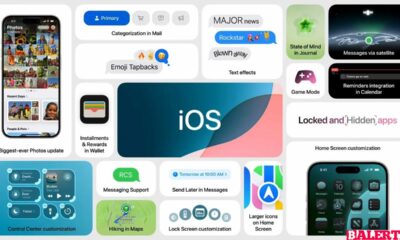Article
Crisis Management in Healthcare Systems
Dive into the intricate world of crisis management in healthcare systems. Discover strategic approaches to navigate turbulent tides and fortify resilience, ensuring your organization thrives even in the face of adversity.

Navigating the Turbulent Tides of Healthcare Crisis Management
In the dynamic and ever-evolving landscape of healthcare, crisis management has become a critical component of maintaining a resilient and adaptable system. As healthcare professionals, we are tasked with not only providing exceptional care but also navigating the unpredictable waters of emergencies, natural disasters, and unforeseen challenges that can threaten the well-being of our patients and the integrity of our institutions.
Embracing Proactive Preparedness
The first step in effective crisis management is to cultivate a culture of proactive preparedness. This involves meticulous planning, comprehensive risk assessments, and the development of robust contingency strategies that can be swiftly implemented when the need arises. By anticipating potential crises and meticulously mapping out response protocols, healthcare organizations can minimize the impact of disruptive events and ensure the continuity of critical services.
Effective Communication: The Lifeblood of Crisis Response
In the midst of a crisis, clear and transparent communication is the lifeblood of a successful response. Healthcare leaders must establish robust communication channels that facilitate the seamless exchange of information between staff, patients, and the broader community. This includes the implementation of emergency notification systems, the deployment of dedicated crisis communication teams, and the establishment of centralized information hubs that provide real-time updates and guidance.
Building Resilient Teams
The success of any crisis management strategy hinges on the resilience and adaptability of the healthcare team. By investing in the professional development and well-being of our staff, we can cultivate a cadre of healthcare professionals who are equipped to navigate the challenges of crisis situations with composure, empathy, and unwavering commitment to patient care.
Leveraging Technology and Innovation
In the rapidly evolving world of healthcare, technology and innovation play a pivotal role in crisis management. From telemedicine solutions that enable remote patient monitoring to data analytics tools that provide real-time insights into emerging threats, the strategic integration of cutting-edge technologies can enhance the agility and responsiveness of healthcare systems during times of crisis.
- Embrace a culture of continuous learning and improvement
- Collaborate with community partners and stakeholders
- Prioritize the well-being and resilience of healthcare workers
- Adapt and evolve crisis management strategies as needs change
By navigating the turbulent tides of healthcare crisis management with a steadfast commitment to preparedness, communication, team-building, and technological innovation, we can ensure that our healthcare systems remain resilient, responsive, and capable of providing exceptional care even in the face of the most daunting challenges.
Fortifying Resilience: Proactive Strategies for Healthcare Systems in Times of Adversity
In the face of evolving challenges, healthcare systems must cultivate a culture of preparedness to safeguard their ability to provide uninterrupted, high-quality care. This begins with proactive planning and the implementation of robust crisis management protocols that address a wide range of potential disruptions, from natural disasters and pandemics to cyberattacks and supply chain breakdowns.
Resilient healthcare systems are characterized by their ability to adapt and pivot in response to rapidly changing circumstances. By fostering operational flexibility through cross-training, resource redundancy, and streamlined decision-making processes, healthcare organizations can ensure their capacity to maintain essential services and effectively respond to emergencies.
Effective crisis management in healthcare requires seamless coordination and communication across all levels of the organization, as well as with external stakeholders, such as public health authorities, emergency services, and community partners. By cultivating strong relationships and establishing clear communication channels, healthcare systems can enhance their collective resilience and responsiveness in times of crisis.
The integration of advanced technologies, such as telemedicine, data analytics, and automated systems, can play a crucial role in fortifying the resilience of healthcare systems. By leveraging these tools, healthcare organizations can improve their ability to monitor, respond to, and mitigate the impact of crises, ensuring the continuity of care and the safety of both patients and staff.
The resilience of a healthcare system is ultimately dependent on the well-being and resilience of its workforce. By prioritizing the mental, physical, and emotional support of healthcare professionals, organizations can empower their staff to navigate the challenges of crisis situations with greater confidence and effectiveness.
Effective crisis management is an ongoing process that requires continuous learning, evaluation, and adaptation. By regularly reviewing their crisis response plans, conducting simulations, and incorporating lessons learned, healthcare systems can continuously enhance their ability to anticipate, prepare for, and overcome adversity.
- Cultivate a culture of preparedness through proactive planning and robust crisis management protocols.
- Foster operational flexibility to adapt and pivot in response to rapidly changing circumstances.
- Strengthen collaboration and communication across the organization and with external stakeholders.
- Invest in technological resilience to improve monitoring, response, and mitigation capabilities.
- Prioritize staff well-being and support to empower healthcare professionals in crisis situations.
- Embrace continuous learning and improvement to enhance crisis management capabilities over time.
Article
Creative Design Applications Developed with Artificial Intelligence
Unleash your creative potential with AI-powered design solutions that redefine the boundaries of innovation. Explore cutting-edge applications that seamlessly blend artificial intelligence and software development, revolutionizing the way you approach design.

Unleashing Creativity: AI-Powered Design Solutions for Tech Innovators
In the ever-evolving world of technology, creativity has become a crucial asset for software developers and programmers. Introducing Artificial Intelligence (AI) into the design process has revolutionized the way we approach creative problem-solving, unlocking new possibilities and driving innovation like never before.
Imagine a world where your design ideas come to life with a mere click of a button. Thanks to the advancements in AI, this dream is now a reality. From generative design that assists in ideation to intelligent color palettes that harmonize your visuals, AI-powered design tools have become indispensable for tech innovators.
No longer bound by the limitations of manual design, AI-driven applications can automate repetitive tasks, freeing up your time and mental capacity to focus on the truly creative aspects of your work. Whether it’s layout optimization, asset generation, or image manipulation, AI-powered design solutions empower you to unlock your full creative potential.
The collaboration between humans and AI in the design process has given rise to a new era of creative synergy. AI assistants can provide real-time feedback, suggest innovative concepts, and even learn from your design preferences to deliver tailored solutions. This symbiotic relationship between designer and machine unleashes unparalleled creative possibilities.
As the landscape of design evolves, the integration of AI has become a game-changer for tech innovators. By harnessing the power of AI-driven design solutions, you can streamline your workflow, enhance your creative output, and stay ahead of the curve in the ever-competitive world of technology. Embrace the future of AI-powered design and unlock your full creative potential today.
- Generative Design
- Intelligent Color Palettes
- Layout Optimization
- Asset Generation
- Image Manipulation
- Real-Time Feedback
- Innovative Concept Generation
- Personalized Design Preferences
Harnessing the Power of AI: Cutting-Edge Design Applications for Software Developers
In the ever-evolving landscape of software development, the fusion of Artificial Intelligence (AI) and creative design has ushered in a new era of unprecedented possibilities. As software developers, you now have access to a vast array of AI-powered design tools and applications that can revolutionize your creative workflows, elevate your projects, and captivate your users.
Gone are the days of tedious, manual design tasks. AI-powered design applications have introduced a paradigm shift, empowering you to unleash your creativity with unparalleled efficiency and precision. From generative design to intelligent color schemes, these cutting-edge tools harness the power of machine learning to automate repetitive tasks, generate unique design concepts, and provide real-time insights that can elevate your projects to new heights.
In the realm of software development, user experience (UX) is paramount. AI-powered design applications have revolutionized the way we approach UX, enabling you to create intuitive, visually stunning, and highly engaging interfaces that captivate your users. Intelligent layout optimization, dynamic typography, and personalized content curation are just a few examples of the AI-driven features that can transform your software into a delightful and immersive experience.
- Harness the power of generative design to create unique and innovative concepts
- Leverage intelligent color schemes to evoke the desired emotions and enhance brand identity
- Optimize user experiences with AI-driven layout and typography
- Personalize content and interactions through AI-powered curation and recommendation systems
- Streamline your design workflow with AI-assisted tools that automate tedious tasks
As a software developer, the integration of AI-powered design applications into your creative arsenal can unlock a new frontier of possibilities. Embrace the future of design and elevate your software projects to unprecedented levels of excellence.
Article
Future Business Models with Artificial Intelligence
Unlock the future of business with AI! Discover revolutionary models that harness the power of artificial intelligence. Explore cutting-edge strategies to thrive in the digital age. Captivating insights to transform your enterprise.

Unleashing the Power of AI: Revolutionizing Business Models for the Future
The landscape of business is undergoing a profound transformation, driven by the rapid advancements in Artificial Intelligence (AI). As computer programmers and software developers, you hold the keys to unlocking the tremendous potential of this technological revolution. AI has the power to redefine the very foundations of how companies operate, opening up new avenues for growth, efficiency, and innovation.
AI-powered technologies are revolutionizing the way businesses engage with their customers. Intelligent chatbots, personalized recommendations, and predictive analytics are just a few examples of how AI can enhance customer experiences, driving increased loyalty and satisfaction. By leveraging AI, companies can anticipate customer needs, provide tailored solutions, and streamline customer interactions, ultimately creating a competitive edge in the market.
AI-driven automation and data analytics are transforming the way businesses operate, leading to increased efficiency, cost savings, and improved decision-making. From streamlining supply chains to optimizing resource allocation, AI can help organizations make data-driven decisions, reduce human error, and adapt to changing market conditions with agility.
The integration of AI into business models can unlock a wealth of new revenue opportunities. AI-powered products and services, predictive maintenance, and personalized pricing are just a few examples of how companies can leverage this technology to create new revenue streams and stay ahead of the competition.
- Embrace a culture of innovation and continuous learning to stay ahead of the curve.
- Invest in talent and upskilling to build a strong AI-driven workforce.
- Collaborate with industry experts and partners to leverage the latest AI advancements.
- Develop robust data management and governance strategies to ensure responsible AI deployment.
As computer programmers and software developers, you are at the forefront of this AI revolution. By harnessing the power of AI, you can help businesses unlock unprecedented opportunities, redefine customer experiences, and position themselves for long-term success in the rapidly evolving digital landscape.
AI-Driven Strategies: Crafting Cutting-Edge Business Blueprints for the Digital Age
The digital age has ushered in a new era of unprecedented opportunities, and at the forefront of this transformation lies the power of Artificial Intelligence (AI). As computer programmers and software developers, you hold the keys to unlocking the full potential of AI-driven business strategies that will shape the future of industries worldwide.
In this dynamic landscape, successful businesses are those that can seamlessly integrate AI-powered solutions into their core operations. From optimizing supply chains to enhancing customer experiences, the applications of AI are vast and far-reaching. Explore the cutting-edge AI technologies that can propel your clients’ businesses to new heights, and learn how to strategically implement these solutions for maximum impact.
Discover how to leverage AI-powered insights to drive informed decision-making, streamline operations, and unlock new revenue streams. Delve into the latest case studies showcasing the transformative power of AI-driven business models, and learn how to tailor these strategies to the unique needs of your clients.
As the digital landscape continues to evolve, the ability to harness the power of AI will be a key differentiator for businesses seeking to stay ahead of the curve. Equip yourself with the knowledge and skills to guide your clients through the AI revolution, and position them as leaders in their respective industries.
- Explore cutting-edge AI technologies and their practical business applications
- Develop AI-driven strategies to optimize operations, enhance customer experiences, and drive growth
- Learn from real-world case studies showcasing the transformative impact of AI-powered business models
- Acquire the expertise to become a trusted advisor in the AI-driven business landscape
Article
Innovative Products Developed with Artificial Intelligence
Discover the groundbreaking AI-powered products that are revolutionizing the future. Captivating programmers and inspiring software developers, these innovative solutions showcase the boundless potential of artificial intelligence.

Revolutionizing the Future: AI-Driven Innovations That Captivate Programmers
Artificial Intelligence (AI) has undoubtedly transformed the landscape of modern technology, ushering in a new era of possibilities that captivate programmers and software developers alike. In this captivating exploration, we delve into the remarkable AI-driven innovations that are revolutionizing the future and inspiring the very minds that bring them to life.
One of the most prominent AI-powered innovations that have captured the attention of programmers is the rise of intelligent digital assistants. These advanced AI-powered systems, such as Alexa, Siri, and Google Assistant, have revolutionized the way we interact with technology, offering seamless voice commands, natural language processing, and personalized responses that cater to our every need.
The development of self-driving cars powered by AI has been a game-changer in the transportation industry, captivating programmers with its complex algorithms, sensor integration, and real-time decision-making capabilities. These autonomous vehicles are not only transforming the way we commute but also paving the way for a future where safety, efficiency, and convenience are the driving forces.
Programmers have also been enthralled by the innovative applications of AI in the realm of creativity. AI-powered tools, such as generative adversarial networks (GANs) and language models, have demonstrated the ability to generate unique and captivating art, music, and even poetry, challenging traditional notions of human creativity and inspiring programmers to push the boundaries of what’s possible.
The integration of AI-driven predictive analytics has revolutionized decision-making processes across various industries, from finance to healthcare. Programmers have been fascinated by the ability of these AI-powered systems to analyze vast amounts of data, identify patterns, and make accurate predictions, empowering organizations to make more informed and strategic decisions.
As we witness the continued evolution of AI-driven innovations, programmers and software developers find themselves at the forefront of this technological revolution. From intelligent assistants and autonomous vehicles to AI-powered creativity and predictive analytics, the possibilities are endless, and the future holds immense potential for those willing to embrace the transformative power of Artificial Intelligence.
- AI-powered digital assistants
- Autonomous vehicles
- AI-generated art and creativity
- AI-driven predictive analytics
Unleashing the Power of AI: Groundbreaking Products That Inspire Software Developers
In the captivating realm of technology, artificial intelligence (AI) has emerged as a transformative force, shaping the landscape of innovative products that captivate the software development community. From seamless virtual assistants to autonomous vehicles, the integration of AI has unlocked a new era of possibilities, inspiring developers to push the boundaries of what’s achievable.
One of the most prominent examples of AI-driven innovation is the rise of intelligent automation. By harnessing the power of machine learning and natural language processing, AI-powered software solutions have revolutionized the way we approach repetitive tasks and complex workflows. Intelligent automation tools empower developers to create applications that can learn, adapt, and optimize processes with unprecedented efficiency, freeing up valuable time and resources for more strategic initiatives.
Another remarkable application of AI is the personalized recommendation systems that have transformed the user experience across various industries. From e-commerce platforms to content streaming services, AI-driven algorithms analyze user preferences, behaviors, and contextual data to deliver tailored recommendations that cater to individual needs and interests. These innovative systems inspire developers to create engaging, user-centric applications that foster deeper connections and loyalty among their target audience.
The integration of AI has also revolutionized the world of predictive analytics, empowering developers to create applications that can uncover valuable insights and forecast future trends. By leveraging advanced machine learning techniques, these innovative products analyze large datasets, identify patterns, and generate accurate predictions that can inform strategic decision-making and drive business growth. Developers are captivated by the potential of AI-powered predictive analytics to solve complex problems and unlock new opportunities.
One of the most captivating AI-driven innovations is the rise of conversational interfaces, which have revolutionized the way we interact with technology. AI-powered virtual assistants and chatbots have become increasingly sophisticated, understanding natural language, engaging in contextual dialogues, and providing personalized assistance to users. These innovative products inspire developers to create intuitive, user-friendly applications that seamlessly integrate AI-driven interactions, enhancing the overall user experience.
As we continue to witness the remarkable advancements in AI-powered innovation, software developers are increasingly inspired to create groundbreaking products that redefine industries and transform the way we interact with technology. From intelligent automation to personalized experiences, the integration of AI has opened up a world of endless possibilities, captivating the minds of developers and pushing the boundaries of what’s achievable. By embracing the power of AI, developers can unlock new levels of innovation and create products that truly inspire and captivate their target audience.
-

 Business4 months ago
Business4 months agoObituary: Dan Collins
-

 Business3 months ago
Business3 months agoThe Significance of Jackson Hole: A Central Banking Tradition
-

 Gaming5 months ago
Gaming5 months agoMore than a thousand students vowed not to work for Amazon and Google due to the Nimbus Project.
-

 World5 months ago
World5 months agoRussia and North Korea Strengthen Defense Ties
-

 Business5 months ago
Business5 months agoJump Crypto Invests $10 Million in Pro-Crypto PAC
-

 Article5 months ago
Article5 months agoCreative Design Applications Developed with Artificial Intelligence
-

 Tech2 months ago
Tech2 months agoNew Leaks and Features About the Samsung Galaxy S25 Ultra
-

 Gaming5 months ago
Gaming5 months agoThe Inspirational Success Story of Avon’s Founder Who Sold Books Door to Door











